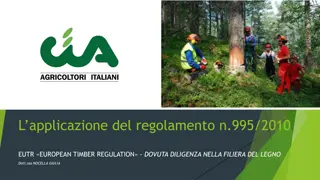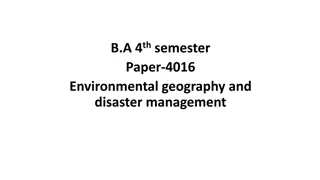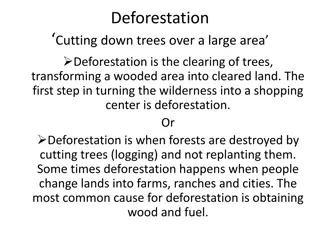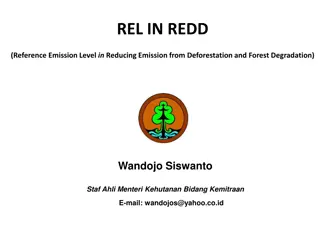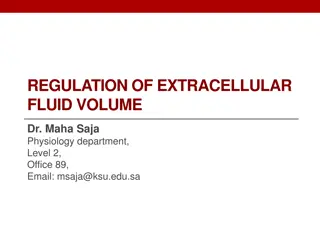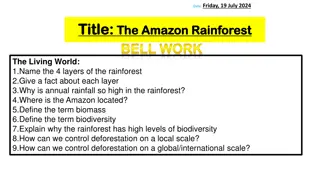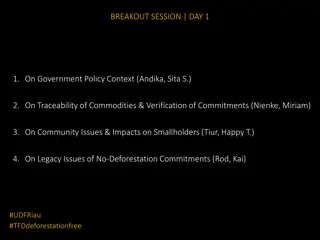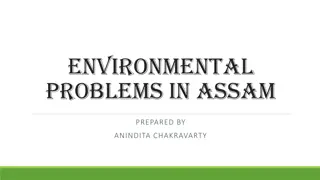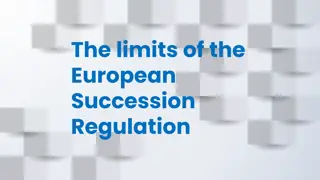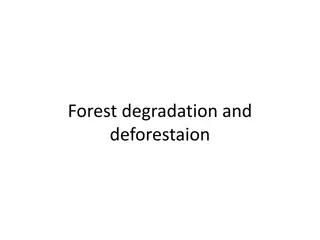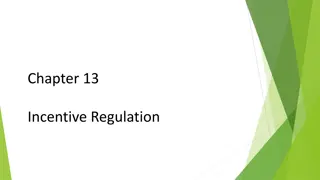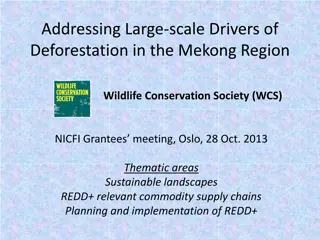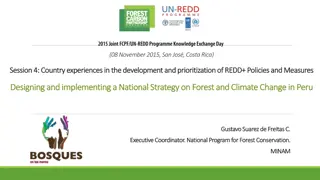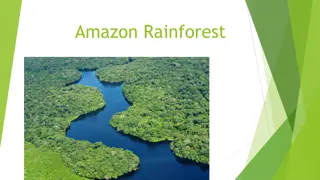Understanding the EU Deforestation Regulation (EUDR) and Its Implications
The EU Deforestation Regulation (EUDR) has significant implications for producers and importers. It outlines obligations, timelines, and consequences of non-compliance, focusing on forestry practices, due diligence systems, and proof of legality. Importers must adhere to a due diligence system to ensure products do not originate from deforested areas. Satellite images, official documents, and certifications can serve as evidence. Compliance with local laws related to forestry, land use, labor, trade, and environmental protection is crucial. The regulation introduces a transition period, requiring exporters to gather necessary information promptly. Entities must understand and adapt to the stringent requirements to navigate the changing regulatory landscape effectively.
Uploaded on Sep 22, 2024 | 0 Views
Download Presentation

Please find below an Image/Link to download the presentation.
The content on the website is provided AS IS for your information and personal use only. It may not be sold, licensed, or shared on other websites without obtaining consent from the author. Download presentation by click this link. If you encounter any issues during the download, it is possible that the publisher has removed the file from their server.
E N D
Presentation Transcript
EU Deforestation Regulation (EUDR) Implications for producers and importers 1
Agenda Timeline EUDR Obligations of importers Information required from producers Consequences of non-compliance Conclusion 2
Timeline EUDR 29.06.2023 EUDR entered into force 30.12.2027 EUDR fully replaces EUTR 30.12.2024 EUDR needs to be applied EUTR and EUDR apply in parallel EUDR applies EUTR applies 18 Months 3 Jahre EUTR continues to apply in case of: Harvest before 29.06.2023 Placing on the EU market between 30.12.2024 und 30.12.2027 EUDR applies to all wood harvested from 29.6.2023 3
Problem: Transition period For wood harvested from 29.06.2023 and placed on the EU market from 30.12.2024, EUDR applies Exporters need to start collecting information now In theory, EUDR also applies for wood harvested from 29.06.2023 and placed on the EU market before 30.12.2024, in case the wood will be sold again in the EU after 30.12.2024 ETTF is lobbying for an exemption 4
Obligations of importers Apply a due diligence system (DDS) prior to placing on the market Aspects to be considered in DDS: Deforestation Forest degradation Production (= harvest) according to local laws Submit due diligence statement to EU Information System Communicate information to customers 6
Deforestation/forest degradation Importers must prove that products don t originate from a plot of land where deforestation or forest degradation occurred after 31.12.2020 Deforestation: Conversion of forest to agricultural land Forest Degradation: Conversion of primary forest or naturally regenerating forest to plantation Possible evidence: Satellite images, official documents, certification, own audits etc. 7
Legality Proof that wood was harvested according to local laws: Forest-related rules Land use rights Tax regulations Labour rights Trade and customs regulations Environmental protection Anti-corruption regulations Human rights Indigenous peoples rights (including FPIC) Third parties rights 8
FLEGT/CITES No exemption for wood covered by FLEGT or CITES FLEGT serves as evidence of legality. Deforestation and forest degradation still need to be checked For CITES-wood, a complete DDS must be applied 9
Information required from producers Geo-coordinates of all plots of land where wood was harvested: Area under four hectares: single point From four hectares: polygon In case of several plots of land: everything must be specified! Date or time range of harvest Information about the product (scientific name etc.) 11
Information required from prodcuers Evidence that wood was harvested legally Evidence that the wood doesn t originate from a plot of land where deforestation or forest degradation occurred after 31.12.2020 For high-risk-countries (evidence of corruption or mixing along supply chains etc.), additional information and risk mitigation measures might be necessary 12
Consequences of non-compliance Without geocoordinates, no due diligence statement can be submitted Customs will not allow import Importers and their clients are responsible for the legality of imports Companies can be sued by authorities 14
Consequences of non-compliance Through satellite imagery and EU Information System, authorities can identify plausibility of information False information will cause serious problems for importers: High level of penalties (maximum amount: at least 4% of turnover) Exclusion from public procurement, seizure of products Public "blacklist" of companies who violate the regulation 15
Consequences of non-compliance Any person is allowed to submit substantiated concerns to authorities Authorities must investigate substantiated concerns immediately Anyone with "sufficient interest" can challenge decisions by authorities in court Environmental NGOs will make use of this opportunity 16
Conclusion Illegal logging, deforestation and forest degradation are not the problem. The challenge is collecting and forwarding the necessary proof that the wood is legal and deforestation-free Insufficient information = no import into EU possible Nobody is prepared better for this regulation than forestry enterprises in the tropics (already use GIS systems; documents proving compliance exist; experience with EUTR) 17
Thank you for your attention! Please inform your exporters about the requirements of EUDR! 18


